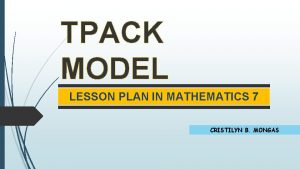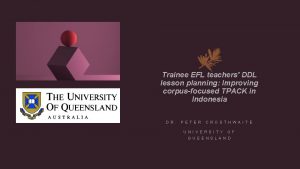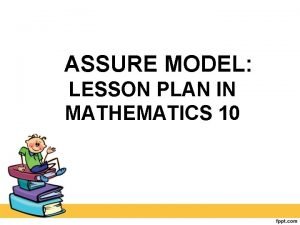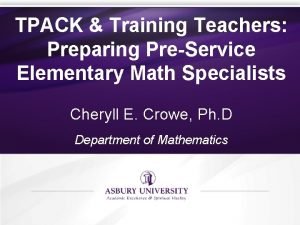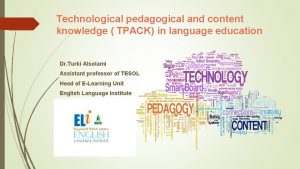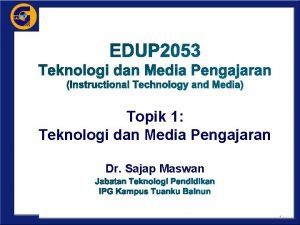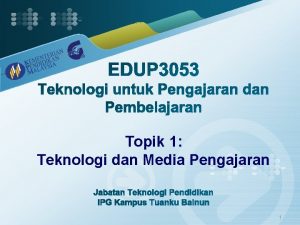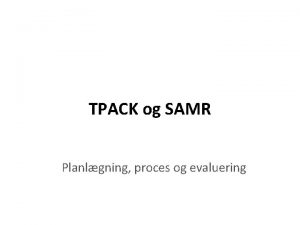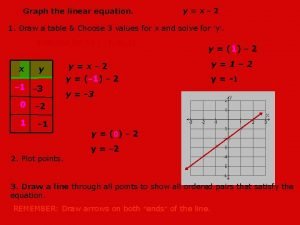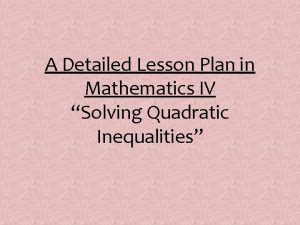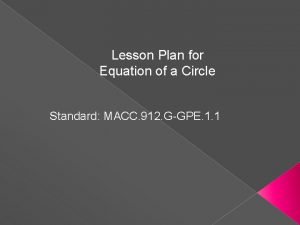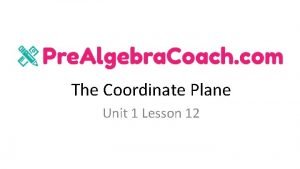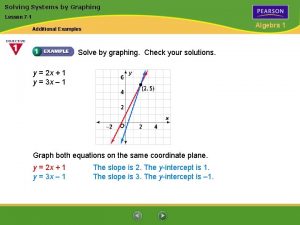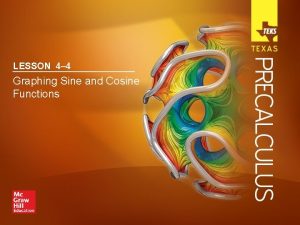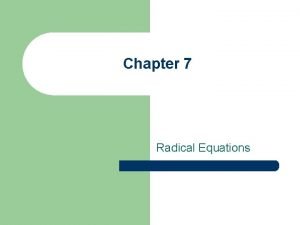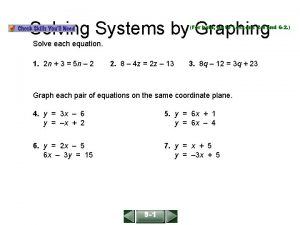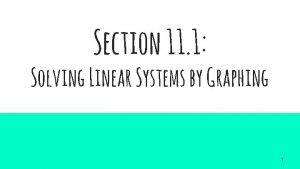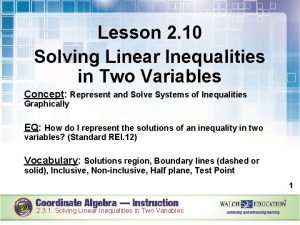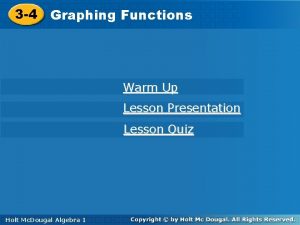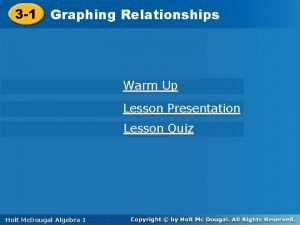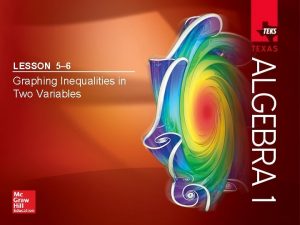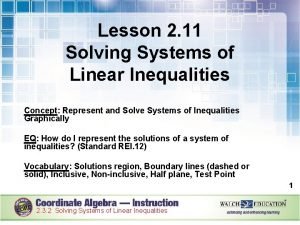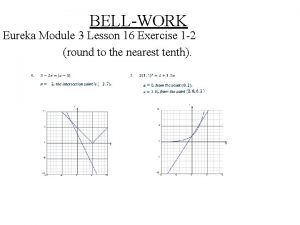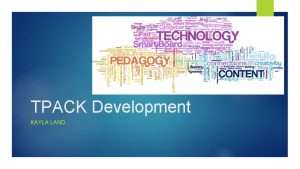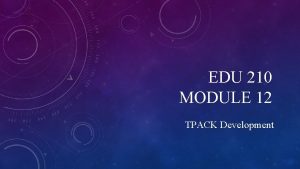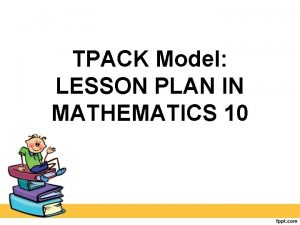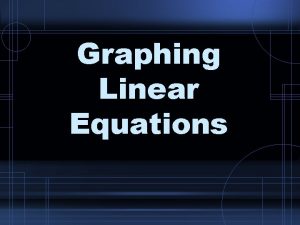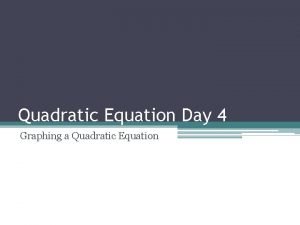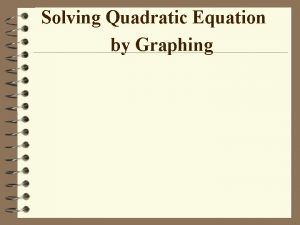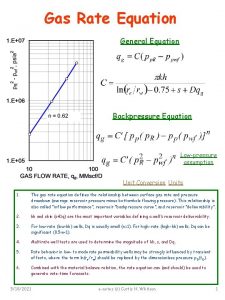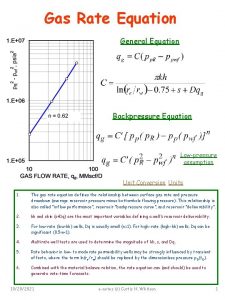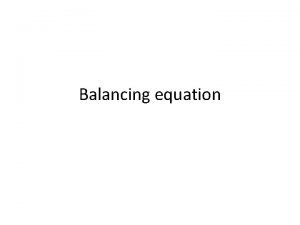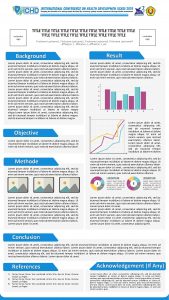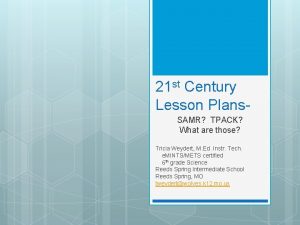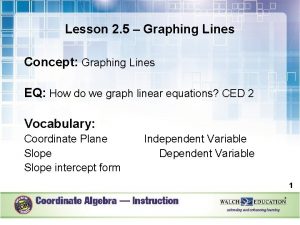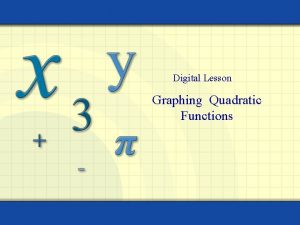TPACK MODEL LESSON PLAN Lesson Title Graphing Equation

























- Slides: 25

TPACK MODEL LESSON PLAN

Lesson Title: Graphing Equation of a Line: Slope-Intercept Form Grade: Grade 8 Lesson Length: 90 minutes

LEARNERS CHARACTERISTICS Learning Styles Students comes from a variety of economic and social backgrounds and their learning styles vary from: auditory, visual, tactile and kinesthetic. However, some students have difficulty maintaining focus during class. In order to overcome this issue, lesson must accommodate the students’ attention span and also to facilitate their individualized preferred needs. Entry Skills Students already knows the basic concepts of slope and intercepts of a line; however they cannot carry out the task in graphing an equation of a line in slope-intercept form.

STATE OBJECTIVES At the end of the lesson, students should be able to: • Demonstrate understanding on slope-intercept form of the equation of a line • Restrict, reposition, and rotate lines with the slope-intercept form using the Desmos Graphing Calculator and Marbleslides: Lines • Develop accuracy and teamwork in making tutorial video about graphing linear equations in slope-intercept form

LESSON DESCRIPTION The information contained in this link: https: //teacher. desmos. com/marbleslides-lines will be used to facilitate the discussion. This contains is an interactive game called Mathslides: Lines and Desmos Online Graphing Calculator developed by the team of educators at the Desmos Labs. This interactive activity makes students manipulate series of linear equations in order to collect the 4 stars on a given page. Once students have completed collecting the four stars they can then move on to the next slide.

LESSON DESCRIPTION To start this activity, a teacher would create a class code from activity launch page, then they would need to distribute the class code so students could access the activity. Once students are inside the activity, the first slides inform them of how the activity works. The first slides include how to use the launch bottom, how to change one of the parameters of a linear equation (slope or y intercept) to collect the stars, and how to reset the equation is you make a mistake. These first sets of activities are called “Fix-it” tasks.

LESSON DESCRIPTION Besides having to have some prior knowledge about the basic properties of linear equations, students will also be introduced to creating restrictions on a line to make it start or stop at a given point. Teachers can use built in tools like thumbs up mode, or the pause button so they can lead a whole class discussion to intervene when students are struggling.

LESSON DESCRIPTION After students complete the “Fix-it” challenges, they move on to the Predict and Verify section of tasks. In the Predict and verify sections, students are asked to anticipate what would happen to a graph if some value is changed, and justify their answers in writing. When students reach of the slides they can see their classmates’ responses. A teacher can review any of these responses and pause the class to ask more probing questions as to why students think their answers is true. Students also have the ability once they make a prediction, to see on the next slide if their prediction is correct by changing the values asked in the prediction section. Students can start to understand why certain changes to a given equation transforms a linear equation.

LESSON DESCRIPTION After students complete the 4 predict and verify questions, they move to the last section of the Marbleslides lab, the Challenge slides. On each of the challenge slides students need to use all of the skills they have learned in the previous slides to come up with a solution to collect all four stars. For all of the challenge slides students must generate their own equations, including parameters, to achieve the goal. After a few students have a solution to a given problem, the teacher could showcase to the class inventive solutions that their classmates have created.

LESSON DESCRIPTION There are eight challenge slides total. If some students complete all of the activities they are given a free play screen where they graph and design whatever they choose. The controls that Desmos provides can help any teacher navigate through the activity. Teachers can see each student’s progress by viewing the thumbs slide, or they can select any given slide and see an overlay of all students’ responses, or see responses from each individual student.

LESSON DESCRIPTION Teachers can also pause the entire class at any time, so they can lead a class discussion or help students understand difficult concepts. Teachers can also enable teacher pacing which forces students to walk through each activity at the teacher's pace, rather than the students pace.

TPACK Specific Questions T – Desmos Lab—Math. Slides: Lines and Online Graphing Calculator P – Inquiry-based learning C – Graphing Linear Equations: Slope-Intercept Form of a Line

Pedagogical Content Knowledge Definition of PCK: The Inquiry-based learning is an effective method on teaching linear equations. This concept is challenging for grade 7 students taking algebra 1. Students have struggled on visualizing how manipulating slopes and y-intercept can change a graph. Description of PCK: The inquiry-based lesson has students manipulating linear functions in the form of y=mx+b and restricting slopes and y-intercepts to make inferences on how the graph is affected. Changing any or all of the parameters will make the linear equation translate, reflect, or shift. This lesson has students virtually manipulate values in an equation and see the effects happen instantly.

Pedagogical Content Knowledge Support of PCK: Some of the traditional methods in mathematics instruction do not allow for much questioning, investigation, or developing understanding. The Inquiry-based instruction in mathematics, however, allows for this to take place and opens doors for students to answer their own questions, explore meaningful problems, and incorporate several mathematical concepts into one problem (Kyle Ferguson, 2010).

Technological Content Knowledge Definition of TCK: Desmos technology supports student learning in graphing linear equations. Description of TCK: Desmos is a free online graphing calculator that allows users to manipulate various equations and represent them visually. The Desmos Labs allows teachers to create learning environments for their students to explore mathematical concepts, as well as utilize pre-created lessons that explore specific concepts. In this environment, we selected a lesson on linear functions that gamifies students learning about slope, domain restrictions, and y-intercepts. With the support of Desmos will be allowed to play and discover more on linear equations.

Technological Content Knowledge Support TCK: “We have learned that calculators cause changes in the way we teach and in the way students learn. Before computers and calculators, it was necessary for students to spend time mastering and becoming proficient in the use of paper-andpencil computational and manipulative techniques. Today much of this time can be spent on developing deeper conceptual understanding and valuable critical-thinking and problem-solving skills. Calculators reduce the drudgery of applying arithmetic and algebraic procedures when those procedures are not the focus of the lesson. They provide better ways to compute and manipulate symbols. For example, if the problem is to find the area of a region bounded by the graphs of two functions, then the essential challenge for the student is to understand that a definite integral is needed, determine the limits of integration, and setup the specific definite integral. Finally, the student needs to determine whether the answer obtained makes sense in the problem situation. All these tasks require serious thinking and thorough understanding.

Technological Content Knowledge Support TCK: The actual computation of the integral is often best done with (or feasible only with) calculator or computer technology. Calculators with computer interactive geometry allow for investigations that lead to a much better understanding of geometry (Laborde 1999; Vonder Embse and Engebretsen 1996). Calculators help students see that mathematics has value. Students using calculators find mathematics more interesting and exciting. Texas Instruments first introduced a handheld calculator-based-laboratory (CBL) device in 1994 that connects to the link port of graphing calculators. This device allows students to make precise measurements of many scientific phenomena and store the measurements in their calculators for mathematical analysis.

Technological Content Knowledge Support TCK: Thus, more than any other classroom innovation in the past, calculator-based laboratories have connected school mathematics to the real-world phenomena around the student. The excitement and interest in both mathematics and science generated by these real-world connections is impressive (Bruneningsen and Krawiec 1998). The use of the Desmosapplications and all of its features brings the older, yet effective, graphing calculator into more relevant with today’s students. Calculators make possible a “linked multiple-representation” approach to instruction. A graphing calculator makes graphical and numerical representations practical learning strategies”(Burke, 2000).

Technological Content Knowledge Support TCK: Thus, more than any other classroom innovation in the past, calculator-based laboratories have connected school mathematics to the real-world phenomena around the student. The excitement and interest in both mathematics and science generated by these real-world connections is impressive (Bruneningsen and Krawiec 1998). The use of the Desmosapplications and all of its features brings the older, yet effective, graphing calculator into more relevant with today’s students. Calculators make possible a “linked multiple-representation” approach to instruction. A graphing calculator makes graphical and numerical representations practical learning strategies”(Burke, 2000).

Technological Pedagogical Knowledge Definition of TPK: Desmos is not only an effective and helpful technology in facilitating inquirybased learning, but also it helps create an environment where students can share knowledge with their classmates. The use of Desmos allows the student to get a deeper understanding of how different parameters affect the equation of a line. If students had to do this activity with paper and pencil, for each equation they would have to construct a table and a graph. The “human error” factor is either reduced or eliminated when using this technology. Students can easily make changes and see immediate results, therefore, gaining the knowledge of the concept on graphing linear equation in slope-intercept form more concretely.

Technological Pedagogical Knowledge Description of TPK: This Desmos Lab allows students to input linear equations and see the graph automatically. This technology allows the student to manipulate the equation in exploring how the graph is affected. In this lab the student is trying to catch all of the stars. The Desmos Lab allows students to explore the linear equations concepts in more detail and make their own inquires.

Technological Pedagogical Knowledge Support of TPK: “Math instruction can be the most resistant to changes in pedagogy — even schools that have had success with project-based learning or inquiry-centered approaches can struggle to teach math in ways that help students understand the rich connections and complexity of the subject. That’s why some educators are excited to see Desmos — an ed-tech product best known for offering an online graphing calculator — adding features that promote inquiry” (Katrina Schwartz, 2017).

Technological Pedagogical Content Knowledge Define TPCK: Teaching linear equations through inquiry-based learning while using a graphing calculator like desmos promotes learning in a math classroom. Description of TPCK: Students can use the Desmos Lab as an introduction to linear equations. They have a basic knowledge of linear equations from 8 th grade or pre-algebra. This Desmos Lab will allow students to make inquiries based on the lesson and develop conclusions and connections about how the graph of a linear equation is affected by changing the slopes and the intercepts.

Technological Pedagogical Content Knowledge Support of TPACK: “Students can be more investigative as the constructivist approach and student centered learning were implemented in the teaching process in understanding the mathematical concepts, thus can boost higher order thinking skills. There is a pedagogical impact in incorporating the latest trend in mathematics education namely, integrating the graphing calculator to maximize the mathematical and pedagogical benefits to students” (Tajudin. , & Zarkasi, 2014)

REFERENC ES • Ferguson, K. (2010). Inquiry Based Mathematics Instruction Versus Traditional Mathematics Instruction: The Effect on Student Understanding and Comprehension in an Eighth Grade Pre-Algebra Classroom. doi: 10. 15385/tmed. 2010. 5 • Schwartz, K. (n. d. ). Could This Digital Math Tool Change Instruction For the Better? Retrieved March 12, 2017, from https: //ww 2. kqed. org/mindshift/2016/04/06/could-this-digital-math-toolchange-instruction-for-the-better
 Tpack model lesson plan
Tpack model lesson plan Ddl lesson plan
Ddl lesson plan Assure lesson plan sample
Assure lesson plan sample What is tpack
What is tpack Tpack refers to *
Tpack refers to * 7 komponen tpack
7 komponen tpack Pengenalan topik
Pengenalan topik Tpack
Tpack Micro teaching lesson plan for english
Micro teaching lesson plan for english How to graph linear equations
How to graph linear equations Prefatory elements in proposal exclude
Prefatory elements in proposal exclude Title title
Title title Detailed lesson plan in inequalities
Detailed lesson plan in inequalities Equation of a circle lesson plan
Equation of a circle lesson plan Lesson 12-1 graphing on the coordinate plane answer key
Lesson 12-1 graphing on the coordinate plane answer key Lesson 7 solve systems of equations by graphing
Lesson 7 solve systems of equations by graphing 4-4 graphing sine and cosine functions
4-4 graphing sine and cosine functions Lesson 7 - graphing radical equations and inequalities
Lesson 7 - graphing radical equations and inequalities Lesson 9.1 solving linear systems by graphing answer key
Lesson 9.1 solving linear systems by graphing answer key 11.1 solving linear systems by graphing
11.1 solving linear systems by graphing Lesson 2-1 graphing two-variable equations
Lesson 2-1 graphing two-variable equations 3-4 graphing functions
3-4 graphing functions 3.1 graphing relationships
3.1 graphing relationships 5-6 graphing inequalities in two variables answer key
5-6 graphing inequalities in two variables answer key Graphing systems of inequalities lesson 2-2
Graphing systems of inequalities lesson 2-2 Lesson 16 solving and graphing inequalities
Lesson 16 solving and graphing inequalities
